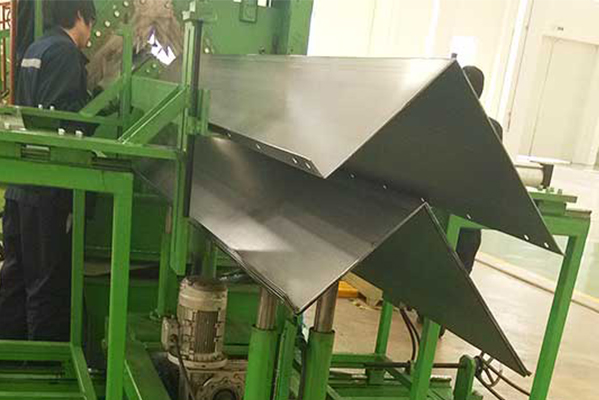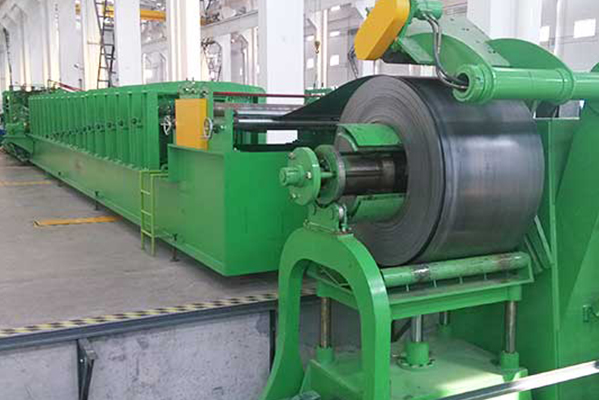Navigation Menu
Contact Us
- Email:
- info@wxavatar.com
- Address:
- Yurong Village, Yuqi Street, Huishan District, Wuxi, China.
Release Date:Mar 25, 2025 Visit:56 Source:Roll Forming Machine Factory
Steel silo roll forming machines are powerful industrial equipment that significantly improve production efficiency in metal silo manufacturing. However, improper operation or lack of safety measures can lead to serious workplace accidents. This article examines the key hazards associated with these machines and provides essential safety precautions to ensure safe operation.
1. Mechanical Hazards
A. Pinch and Crush Points
Risk Areas: Roller gaps, feeding mechanisms, cutting systems
Injury Potential: Finger/hand crushing, limb entrapment
Prevention:
Install fixed guards around all moving parts
Use light curtains or safety interlocks
Never attempt adjustments while machine is running
B. Rotating Components
Risk Areas: Decoiler, forming rollers, drive mechanisms
Injury Potential: Clothing/hair entanglement, severe lacerations
Prevention:
Secure all rotating parts with protective covers
Prohibit loose clothing/jewelry near machinery
Implement lockout/tagout (LOTO) during maintenance

2. Electrical Hazards
A. Electric Shock Risks
Risk Areas: Control panels, motor connections, damaged wiring
Injury Potential: Electrocution, electrical burns
Prevention:
Regular insulation resistance testing
Proper grounding of all equipment
Use of residual current devices (RCDs)
B. Control System Failures
Risk Areas: PLC malfunctions, sensor errors
Potential Consequences: Unexpected machine movements
Prevention:
Routine system diagnostics
Emergency stop buttons at multiple locations
Backup power failure protection
3. Material Handling Hazards
A. Coil Loading/Unloading
Risks: Heavy coil drops (500-2000kg typical weight)
Injury Potential: Crushing injuries, foot damage
Prevention:
Use overhead cranes with proper lifting gear
Designated coil storage areas
Steel-toe boots requirement in work area
B. Sharp Edges on Formed Panels
Risk Areas: Cut panel edges, burrs
Injury Potential: Deep cuts, puncture wounds
Prevention:
Automatic deburring attachments
Cut-resistant gloves for handlers
Proper stacking procedures

4. Noise and Vibration Hazards
A. High Noise Levels
Typical Range: 85-100 dB during operation
Health Effects: Hearing loss, communication difficulties
Prevention:
Sound enclosures or acoustic barriers
Mandatory hearing protection (ear muffs/plugs)
Regular noise level monitoring
B. Whole-Body Vibration
Source: Machine operation, material movement
Health Effects: Musculoskeletal disorders
Prevention:
Anti-vibration mounts
Operator rotation schedules
Ergonomic workstation design
5. Hydraulic/Pneumatic System Hazards
A. High-Pressure Fluid Injection
Risk Areas: Hydraulic hoses, connections
Injury Potential: Severe tissue damage
Prevention:
Regular hose inspections
Pressure relief valves
Never check leaks with hands
B. Compressed Air Risks
Risk Areas: Pneumatic cutting systems
Injury Potential: Eye injuries, hearing damage
Prevention:
Air nozzle pressure regulation
Safety goggles requirement
Quick-disconnect fittings
6. Operational Process Hazards
A. Improper Machine Setup
Risks: Incorrect roller alignment, wrong material thickness
Potential Consequences: Machine jams, product defects
Prevention:
Detailed setup checklists
Dual-operator verification system
Digital thickness sensors
B. Emergency Situations
Scenarios: Material jams, power failures
Risks: Improper troubleshooting attempts
Prevention:
Clear emergency procedures
Accessible emergency stops
Regular safety drills
7. Environmental Hazards
A. Metal Dust Accumulation
Source: Forming/cutting process
Health Risks: Respiratory issues, explosion risk
Prevention:
Local exhaust ventilation
Regular workplace cleaning
Explosion-proof electrical fittings
B. Oil and Lubricant Spills
Risk Areas: Hydraulic leaks, lubrication points
Safety Hazard: Slip/fall accidents
Prevention:
Drip trays under machines
Non-slip flooring
Spill response kits
8. Human Factor Hazards
A. Operator Fatigue
Contributing Factors: Repetitive tasks, long shifts
Risks: Reduced alertness, slower reaction times
Prevention:
Job rotation schedules
Adequate rest breaks
Automated monitoring systems

B. Inadequate Training
Consequences: Improper operation, safety violations
Solution:
Comprehensive training programs
Certification requirements
Refresher courses annually
Safety Management System Recommendations
1.Machine Safeguarding
Physical barriers
Presence-sensing devices
Two-hand control systems
2.Personal Protective Equipment (PPE)
ANSI-approved safety glasses
Cut-resistant gloves
Hearing protection
Steel-toe shoes
3.Maintenance Protocols
Preventive maintenance schedules
Lockout/tagout procedures
Maintenance logs
4.Safety Signage
Clear warning labels
Multilingual instructions
Hazard zone markings
Conclusion
While steel silo roll forming machines offer tremendous productivity benefits, they present multiple hazards that require systematic safety management. By implementing engineering controls, administrative measures, and proper PPE, manufacturers can significantly reduce accident risks. A comprehensive safety culture combining proper training, equipment maintenance, and hazard awareness is essential for protecting workers while maintaining efficient operations.
Regular risk assessments and safety audits should be conducted to identify and address new hazards as they emerge. Remember that no production deadline justifies compromising worker safety when operating these powerful industrial machines.